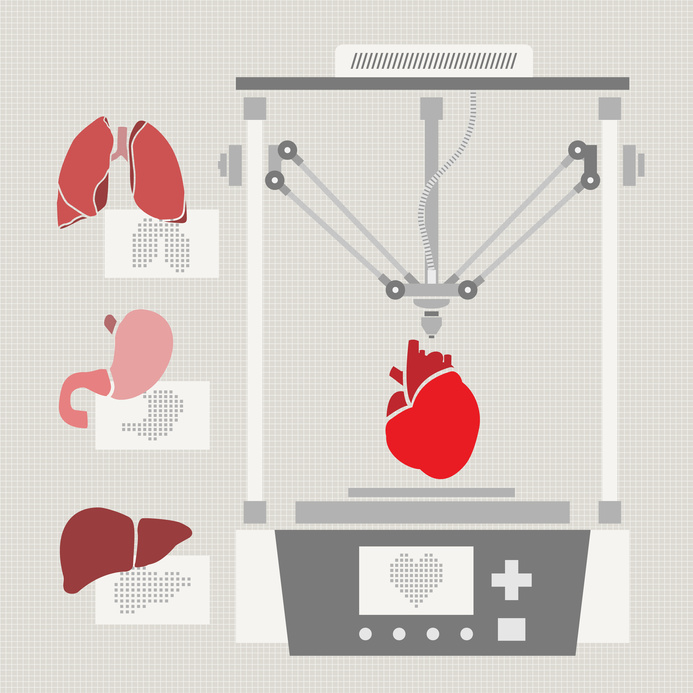Directive Blogs
What is 3D Bioprinting?
 The concept of 3D printing is becoming a factor in more and more industries, perhaps most promisingly in the healthcare sector. This specialization has the potential to revolutionize how patients are treated for some very serious maladies, as well as how well they adjust to their life during the post-treatment stages. However, this application of 3D printing is not without its concerns.
The concept of 3D printing is becoming a factor in more and more industries, perhaps most promisingly in the healthcare sector. This specialization has the potential to revolutionize how patients are treated for some very serious maladies, as well as how well they adjust to their life during the post-treatment stages. However, this application of 3D printing is not without its concerns.
Referred to as 3D bioprinting, this practice has shown great promise to be the next step in medicine. In a laboratory environment, doctors and scientists are able to grow bioengineered human tissue that is almost indistinguishable from what naturally occurs in the human body. With this specialized equipment at their disposal, these scientists are not only able to replicate human tissue, they are also able to print full-size facsimiles of commonly-needed or specialized human organs and features. Prototypes have been produced for replacement ears and skin grafts, heart valves and vascular tubes, as well as bones, joints, and meniscus tissues.
3D bioprinting even allows for these manufactured organs to be customized to the patient. In the case of an ear replacement, the manufactured ear can be sculpted to match the patient’s other one. This functionality alone has the potential to be life-changing for many patients, as it could spare them from a highly visible reminder of their trauma.
Bioprinting can also reduce the duration of patient suffering before a suitable replacement organ is found, as a replacement could hypothetically be printed once the need was apparent. As the technology improves, possible uses will only continue to expand as scientists are able to create closer and closer replications of our naturally occurring features. As another benefit, the fact that the patient’s own cells could be used to grow the replacement would essentially negate the risk of the body rejecting the new tissues.
However, there are some concerns with bioprinting that suggest there may be other issues that patients and healthcare providers will have to deal with if bioprinting is widely adopted into the mainstream.
First of all, there are a few widely-held ethical concerns surrounding this technology. Safety is a very important consideration, as one might expect. Bioprinting replacements for organic materials brings up the question: how does one test an organ for safety before potentially putting the patient at risk? Unfortunately, the nature of most medical testing isn’t compatible with the nature of bioprinting, so testing becomes exceptionally more difficult.
Also of great concern is the potential for bioprinted organs to be used to create a “superior” human being, turning science fiction into reality. Artificially enhancing the human body could easily be abused, much as steroids are frequently abused by professional athletes. Even worse, bioprinting and offshooting technologies could be seen as the means to create a super soldier, leading to a new arms race to create a superhuman weapon.
Whatever the result, it’s clear that bioprinting will be a contentious topic for some time. What do you think? Is it right to use technology to create new cells to benefit those who need them? Tell us what you think in the comments section.

